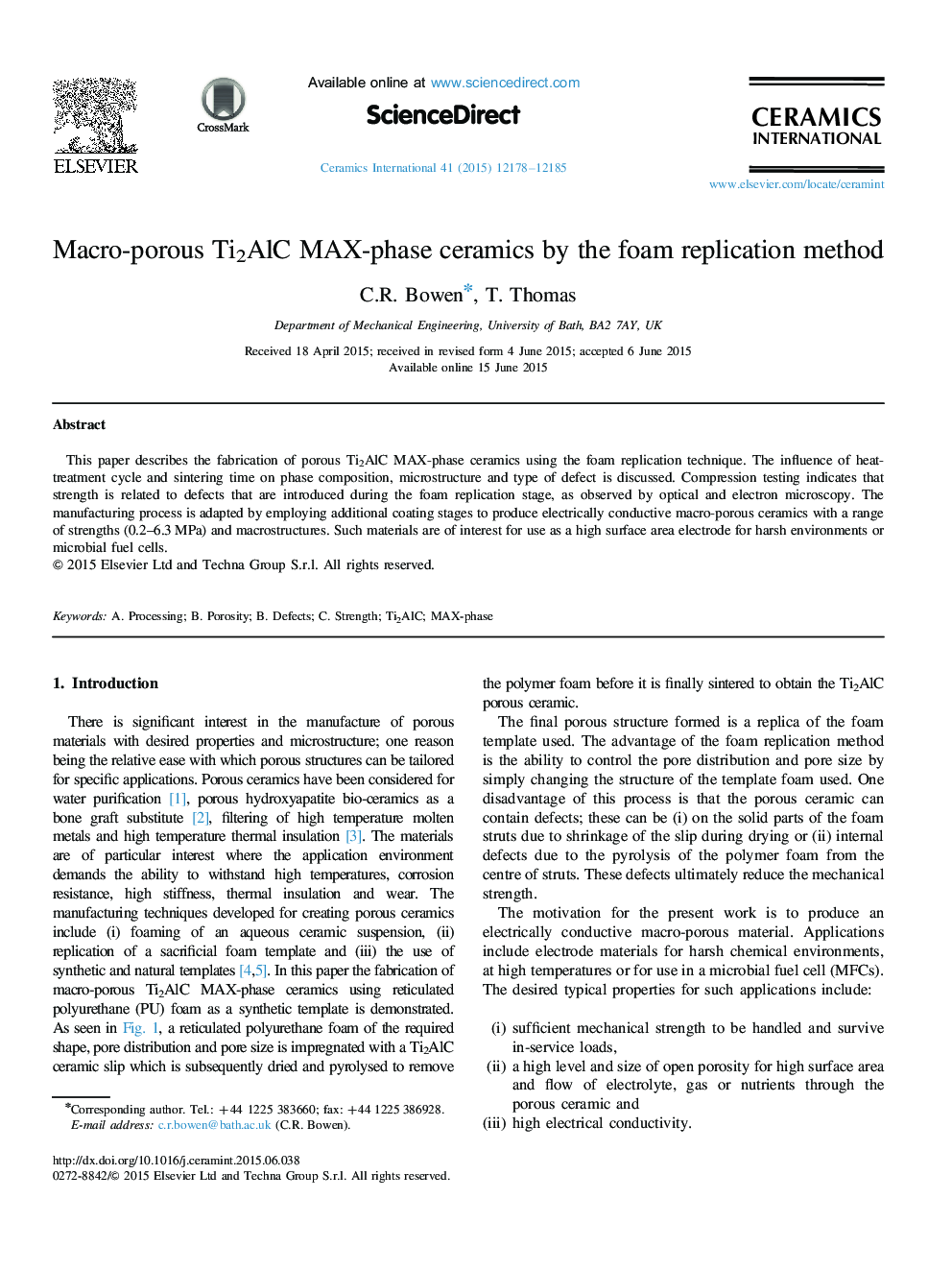| Article ID | Journal | Published Year | Pages | File Type |
|---|---|---|---|---|
| 1459960 | Ceramics International | 2015 | 8 Pages |
Abstract
This paper describes the fabrication of porous Ti2AlC MAX-phase ceramics using the foam replication technique. The influence of heat-treatment cycle and sintering time on phase composition, microstructure and type of defect is discussed. Compression testing indicates that strength is related to defects that are introduced during the foam replication stage, as observed by optical and electron microscopy. The manufacturing process is adapted by employing additional coating stages to produce electrically conductive macro-porous ceramics with a range of strengths (0.2-6.3Â MPa) and macrostructures. Such materials are of interest for use as a high surface area electrode for harsh environments or microbial fuel cells.
Related Topics
Physical Sciences and Engineering
Materials Science
Ceramics and Composites
Authors
C.R. Bowen, T. Thomas,
